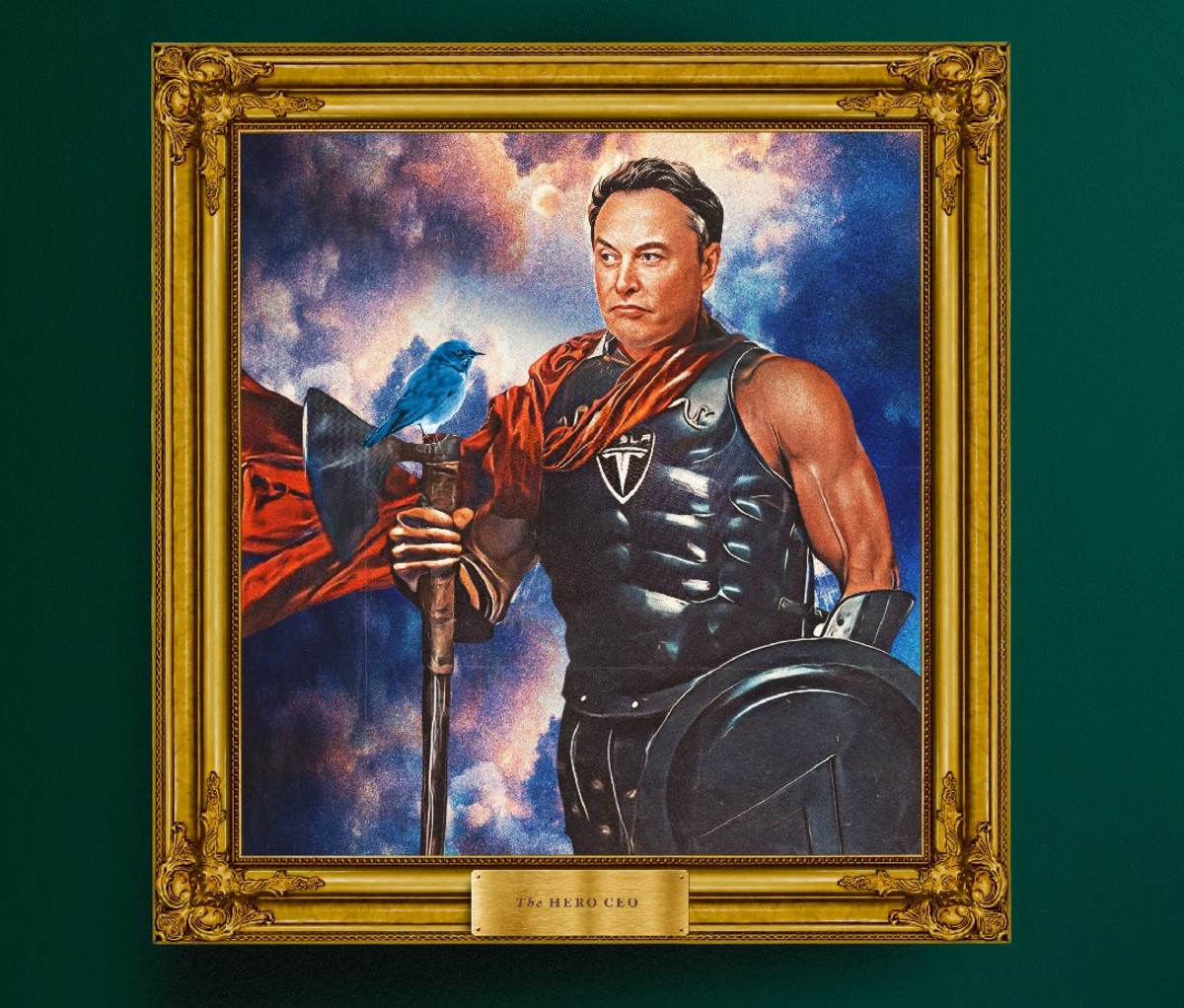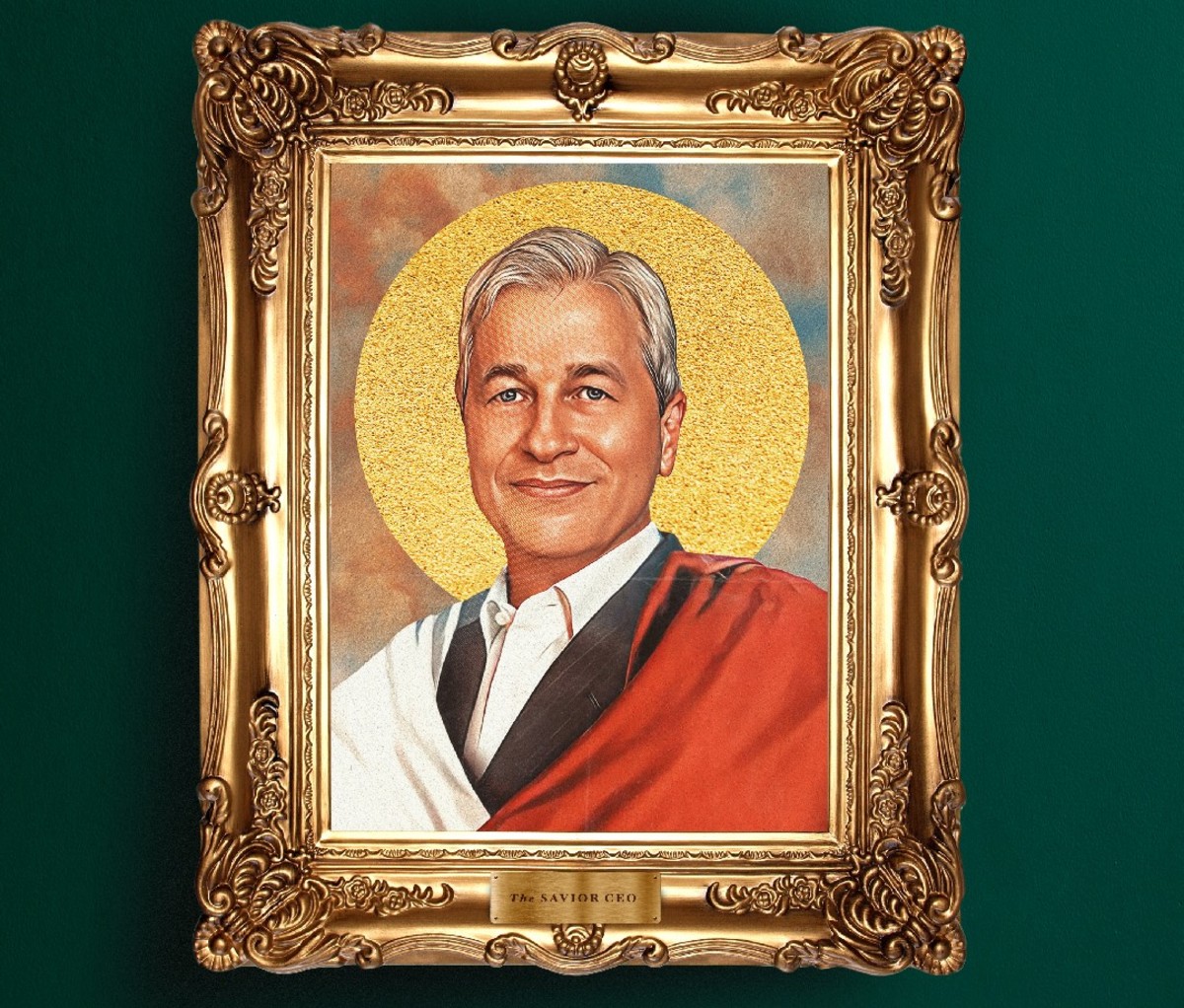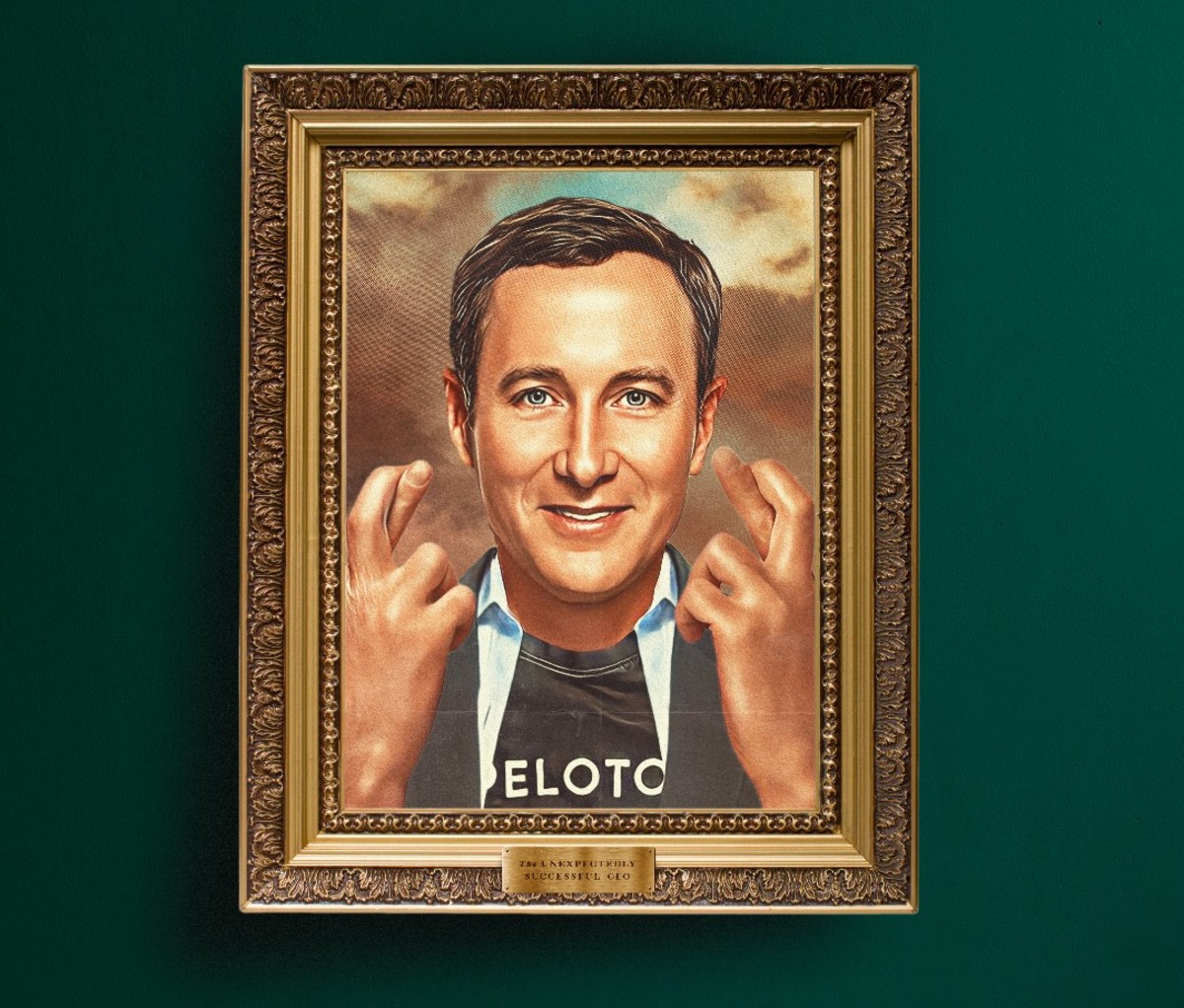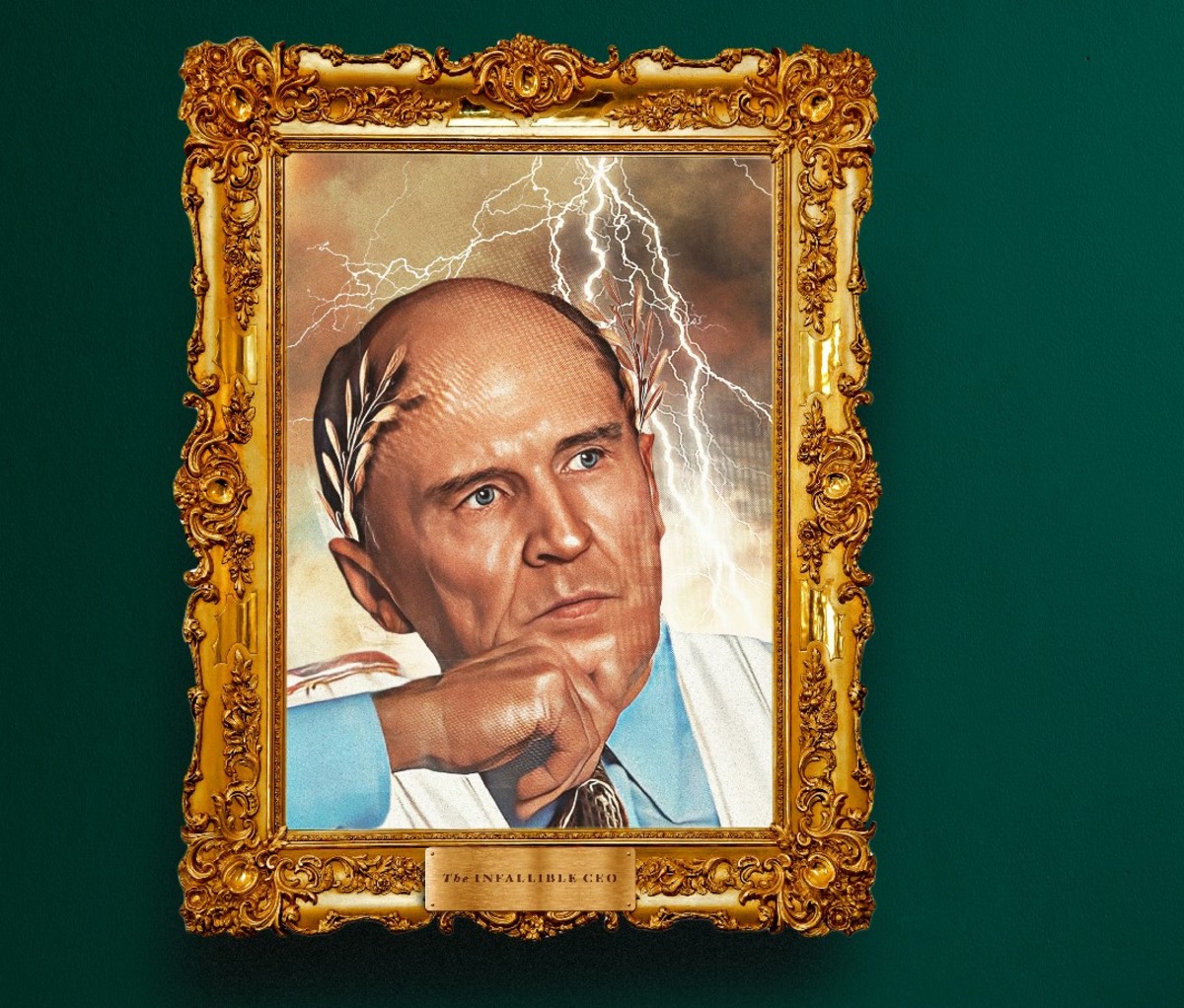Elite corporate CEOs now command staggering sums, deity status and an air of indispensability, but they’d be lost with their companies.
It was a mid-May Tuesday at this year’s JPMorgan Chase annual shareholder meeting when the king of Wall Street, Jamie Dimon, heard something that all external impression suggests he has not heard in a professional setting since Sandy Weill, his great and irascible early mentor and patron, fired him from Citibank back in 1998:
“No.”
The rebuke came from shareholders casting a so-called “say on pay” vote to approve or disapprove the compensation package the JPMorgan board had laid like a banquet before Dimon, who has run the most powerful investment bank in America since 2005 and whose net worth, according to Forbes, stands somewhere north of $1.5 billion. “Say on pay” has been a regular feature of corporate shareholder meetings since the passage of Dodd-Frank in 2010, an annual (or often less frequent) ritual apparently designed to give investors the illusion of agency when it comes to the ever-more-astronomical sums paid to the CEOs of America’s largest public companies. If Congress hoped the specter of being censured by the powerless “true owners” of the firm would serve as some sort of shaming mechanism that might impose reason upon the compensation committees of Fortune 500 boards, those hopes have been dashed by reality: Fully 96 percent of such votes deliver a resounding ratification of the comp packages, 90 percent of them with the yeas tallying above 70 percent.
In the case at hand, the JPMorgan faithful were being asked specifically to cast a thumbs-up or -down on a one-time special bonus grant: 1.5 million shares of stock that wouldn’t vest for another five years and that Dimon, who is 66, wouldn’t be able to sell for an additional five after that, thus supposedly insuring that the great man, whose quip whenever asked has always been that he’ll stay at the bank for five more years, will indeed stay at the bank for at least five more years. The value of the shares on the day they were granted? $53.3 million, which brought Dimon’s total comp for the year to $84.4 million.
Glass, Lewis & Co., a proxy-advisory firm that counsels institutional investors on such votes, had some thoughts on that. “Excessive one-off grants to the CEO and COO amid tepid relative performance worsen long-standing concerns regarding the company’s executive-pay program,” it said in its report urging shareholders to vote against the Dimon award and a similarly structured one to his deputy, Daniel Pinto, in which a $27.9 million one-time bonus boosted Pinto’s total pay to $53.3 million. “Shareholders should consider the company’s sustained disconnect between executive pay and performance of the last nine years.” JPMorgan shares were down about 23 percent on the year at the time of the vote, the worst performance among its banking peers.
Dimon’s compensation had slam-dunked every previous say-on-pay vote, mostly with more than 90 percent, with the lowest previous approval rating at 61 percent. But this time the shareholders took the advice. When the vote was announced, the yeses came in at a shockingly low 31 percent. Of course, Dodd-Frank didn’t see fit to equip “say on pay” with teeth; the vote is a purely nonbinding gesture. So in fact it wasn’t a no that Dimon was hearing, it was more like a “We’d really rather you didn’t.” And you can imagine the impact that sentiment would have on a man who in October 2021 told an interviewer on HBO that he wouldn’t consider requesting a reduction in pay, because he wouldn’t want to offend the board.
The eagerness of the JPMorgan board (over which CEO Dimon has presided as chairman since a 2005 merger with Bank One installed him as savior atop the corporate pyramid) to shovel tens of millions of dollars his way pretty clearly reflects Dimon’s status among the most heroic of Hero CEOs, those without whom, it is generally understood, a company would be asea, powerless against the predations of whatever hundred-year storm might next come barreling down. It was Dimon’s sure hand on the tiller, after all, and his preternaturally clairvoyant approach to risk management, that guided JPMorgan Chase barely scathed through the 2008 financial crisis, and Dimon’s rapacious opportunism that energized the bank’s swooping in and snatching up, for pennies on the dollar, of its drowning competitors Bear Stearns and Washington Mutual.
But is that really a legit explanation for all that shoveling? After all, according to the left-leaning Economic Policy Institute, the average CEO at one of the 350 largest publicly traded companies in America was paid $27.8 million in 2021. How many Hero CEOs can there really be? All of them?
A 2006 study by the economists Xavier Gabaix and Augustin Landier, offers support for the notion that all CEOs are heroes, or that none of them are—or, in any case, that there’s precious little statistical difference on a company’s fortunes between one CEO and another. Gabaix and Landier, after crunching the numbers, found that if the very best CEO were to, by some corporate-succession magic, take over the firm led by the 250th best CEO, that company’s market capitalization would rise by—wait for it—0.016 percent. (Somehow the authors argue that this tiny margin justifies large pay differences.)
A number even more astounding than $27.8 million is provided by EPI, highlighted right up near the top of its report. That data point is 399-to-1, the ratio of average CEO compensation to that of the typical worker in the CEOs’ employ, and it is, as Josh Bivens, director of research at EPI, points out, the highest gap the organization has recorded since it started crunching these numbers decades ago—a jump up from the 366-to-1 in 2020, and an almost unimaginable leap beyond the 59-to-1 recorded in 1989, not to mention the 20-to-1 in 1965.
Why does this matter? “If it was only the CEOs, these 350 people, I would say, ‘That looks super economically inefficient to me, I’m sure these firms could get as good a CEO for radically less money, but it’s not as if my paycheck would go up if the Amazon CEO made less,’” Bivens says. “But it’s gotten big enough that it’s not just a pure symbol. If you look at the top five executives of the company and take their pay and express it as a share of total corporate profits, you’re coming up to 6 or 7 percent of total corporate profits. If you think, ‘We could cut CEO pay in half and still have the job done really well’—and I think 15 million is enough to have someone do the job really well—that would be a meaningful increase in shareholder profits, what they take home. It’s the one cost item of corporate balance sheets that no one seems to care about. Whereas if they could save 3 percent of profits by crushing rank-and-file workers’ pay, they would do that.”

The New Performance Drug
There was a time when CEOs were paid generously but at a pretty consistent level from year to year, decade to decade, a time when the bulk of the chief executive’s compensation came in the form of a salary, and probably cash bonuses tied to reaching certain key performance measures, but generally did not come in the form of grants of stock or stock options, the instruments that have, during a series of extended bull markets, tended to drive CEO pay into the stratosphere, regardless of whether or not it can be said that the CEO had anything materially to do with his company’s stock price rising. That time came to an end pretty much as the sun was setting on the 1970s.
The theory goes that it was the grinding to a halt of the dominance of the American industrial economy after two decades of postwar boom that created the conditions for its overthrow. U.S. infrastructure was essentially untouched by World War II and so we had it easy for a generation, until seemingly out of the blue Japan was a rising power and Western Europe was beginning to be competitive again. America is stagnating! Something needs to be done! So out goes Peter Drucker, out goes “We take care of our workers, our workers take care of our customers, our customers take care of us.” And in comes something called “agency theory,” promulgated by a business-school professor then at the University of Rochester named Michael C. Jensen. “Jensen gave academic credibility to this idea, but if we had been prospering and kicking everybody’s butt economically while taking care of our workers the way we had been for 20 years, I don’t think it would have landed,” says Michael Dorff, a professor at Southwestern Law School in Los Angeles, whose relevance to this conversation relates to his authorship of a book called Indispensable and Other Myths: Why the CEO Pay Experiment Failed and How to Fix It, published in 2014. “It was only because the underlying conventional wisdom was shaken by the fact that we were not performing well. People were looking for an explanation and that really took off and now it’s really hard to shake.”
Jensen’s agency theory postulated that business was stagnating because the interests of the owners (i.e., the shareholders) were out of synch with those of their agents, the executives, who were sacrificing growth and profitability (and, ultimately, stock price) on the altar of stability. (Because why not? They didn’t get any benefit from taking risks.) The solution? Tie the boss’s pay to the company’s performance! Give the CEO stock—or, even more motivationally, stock options, which have value only when the stock price rises—so that his (or her, but, let’s face it, mostly his) interests are pulled into alignment with those of his ultimate bosses, the investors.
At first, hard as this may be to believe in retrospect, CEOs weren’t all that keen on this new theory of corporate management and compensation, probably because it explicitly put the onus for success—and the blame for failure—squarely at the feet of the chief executive. But then, in late 1982, a historic bull market began (which, with a few short blips along the way, has stampeded forward for another four decades) and the wisdom of the program became manifest to its primary beneficiaries. The EPI, which calculates its figures based on “realized pay”—that is, the money that ends up in a person’s pocket once those options have been exercised and sold, after a run-up in the stock market has inflated their value far beyond what the board anticipated when the options were granted—notes that CEO pay has risen since 1978 by 1,460 percent after accounting for inflation. By comparison, compensation for the typical worker grew by just 18.1 percent during that time.

“Every CEO looks like they’re doing a great job because all boats rise in a rising sea,” says Frank Dobbin, chair of the sociology department at Harvard. “Pay for performance was not really pay for performance, it was pay for ‘The sea is rising and I happen to be a boat on the sea.’” Dobbin comes at this from the perspective of having co-authored a paper back in 2010 called “The Misapplication of Mr. Michael Jensen,” in which he compellingly made the case that a selective adoption of agency theory’s core recommendations—tie executive pay to performance; break up conglomerates; use debt rather than profits to finance expansion—“heightened corporate risk-taking without imposing constraints” and thus led more or less directly to the recession in 2001 and the Great Recession at the end of that decade. And he’s concerned that not much of importance has changed to mitigate that risk. “The incentive system is still the same for executives, in essence; CEOs and top management teams generally have a lot of variable pay,” he says. “Most of their pay does not come from salary, it comes from bonus and options, which are some kind of function of the performance of the firm, and the performance of the firm is about share price. As a consequence, I feel like the dynamic that we saw before 2008 is still there—still encouraging firms to pursue short-term growth and income strategies that might be pretty risky in even the medium term.”
But what about Dobbin’s contention that the apparent success of agency theory—stock prices went up!—cannot be credited to pay-for-performance after all? Maybe he’s just being churlish? Well, consider that Michael Dorff wrote an entire book in which he marshals study after study that demonstrate that performance pay tends, if anything, to have a net negative impact on share price—and of course couldn’t get anyone to listen to him.
“It doesn’t matter what the data say; data is not sexy,” Dorff says. “Everyone they know has always done it this way. One board I talked to whose chair is an old friend of mine, he loved the book, and he was very persuaded, he really pushed them. And I got a call from someone in the general counsel’s office asking for examples of corporate filings where companies had done what I wanted them to do. But no one has done what I want them to do; that’s the point. I said, ‘I’m happy to help you draft something.’ And that was the last I heard from them. That was really scary: The idea that you’re going to do something so beyond the vanguard that you’re going to have to draft all new language; forget it. The attitude is: We know this is safe; the comp consultants told us this is right; and no one will criticize us for doing what everybody else does.”
Dan Rasmussen, founder of the asset-management firm Verdad, in 2019 published an article in Institutional Investor called “The MBA Myth and the Cult of the CEO.” In it, he and his coauthor, Haonan Li, recounted their efforts to crunch numbers that might support the theory behind tying CEO pay to the performance of a company’s stock. Could it be shown that CEOs drove the same sort of results at a second company that they had at a first? Was there any correlation between stock performance in one three-year period of CEO oversight and in another? “The answer to all these questions is: none. It’s just random,” he says. “So much of the logic of the last 30 years of CEO pay, which has just gone totally insane, has been about aligning incentives and tying CEO pay to the share price performance. What my research would suggest is that the share price performance is a lot more random and a lot less linked to who the CEO is than that compensation structure would suggest. So what you end up doing is you pay a lot of people for being lucky.”
Stealing From the Poor
Back in July 2016, an Op-Ed appeared in the New York Times under Jamie Dimon’s byline with the headline “Jamie Dimon: Why We’re Giving Our Employees a Raise,” a cri de coeur of sorts on behalf of the little people that comprised the vast bottom stratum of the JPMorgan Chase payroll. “It is true that too many people are not getting a fair opportunity to get ahead,” Dimon wrote. “We must find ways to help them move up the economic ladder, and everyone—business, government and nonprofits—needs to play a role. At JPMorgan Chase, we’re starting by giving thousands of employees a raise. Our minimum salary for American employees today is $10.15 an hour…almost $3 above the current national minimum wage. Over the next three years, we will raise the minimum pay for 18,000 employees to between $12 and $16.50 an hour for full-time, part-time and new employees, depending on geographic and market factors.”
It didn’t go over well. The article attracted 848 mostly quite passionate responses online. A fairly representative example: “So, No-heart Jamie, who awards himself about $13,500 (which is the fraction that we know about) an hour for whatever labor he does is feeling really great about paying one of ‘HIS’ workers, or more realistic, his property (soon to be replaced by his non-human electronic robots whom he will not have to pay at all), $12 an hour. I mean, really, does anyone who actually thinks see the labor of one human being as 1,125 times more valuable than the labor of another? Labor is labor. The human beings who do the labor are human beings.”

Even here in America, where the long-told tale has been that we admire billionaires, we respect the rich, we don’t want to overtax them (or appropriately tax them) because we’re always harboring our Horatio Alger hopes of someday joining them—even here it turns out that, eventually, enough is enough. Or, in any case, more than enough should be enough; after all, no one needs that much. Another commenter on the Op-Ed addressed Dimon directly: “You and your friends at the Wall Street are the reason why we have wage stagnations, income inequality, no universal health care and all the tax loopholes for the billionaires like yourself. After you gave yourself a huge pay increase, you decided to give little folks few extra bucks.”
And, of course, the ire is well-placed. “It turns out the tippy-top is where tons of the inequality is concentrated,” says Josh Bivens of the Economic Policy Institute, with a nice helping of dry understatement. “That’s a huge chunk of the national economy that goes to a pretty select group of people. CEO and corporate executive pay really does distort that entire upper part of the income distribution. If we had a top 1 percent that only claims 10 percent of total national income, the way they did in 1979, that’s a very different economy than one where they claim almost 20 percent, the way they do today.”
How different would that economy be? To get a handle on that question, Bivens and his colleagues at EPI calculate something they call the inequality tax: They assume an economy that grew at the same rate ours did over the past 40 years, pretend that income inequality didn’t rise, and distribute the spoils of that growth accordingly. “Basically, that means the middle 60 to 80 percent would be something like 10 to 12 percent richer than they are today,” he says. “Everyone gets a 10 to 12 percent raise.”

Bad for Business
One of the most corrosive effects of the rise of the Hero CEO as a reigning mythos in our corporate-economic culture is the way it has aggrandized people who are, after all, mere mortals to the point of combustible self-parody. “There has been this movement to treating the CEO as the embodiment of the company, not just the figurehead but the engine behind a company’s success,” Frank Dobbin says. “We overcompensate CEOs, and we encourage them to do what we’re seeing Elon Musk do right now, which is to act like they could manage any firm in any industry and acquire firms in industries they have no knowledge of whatsoever.”
And when you invest people with the assumption of omnipotence, and task them with ensuring that quarterly earnings are hit and the stock prices rises come what may, that can be a recipe for, let’s say, suboptimal outcomes. GE’s “Manager of the Century,” Jack Welch, possibly the most revered CEO of all time, used ruthless cost-cutting, outsourcing, offshoring and financial chicanery to deliver results that met or beat forecasts for nearly 80 quarters in a row. When he took the helm in 1981, GE’s market cap was $14 billion; when he retired in 2001, it was the most valuable company in the world, at $600 billion. Then the bottom fell out, with the company Jack built unable to maintain its momentum, or even slow its decline, until GE announced late last year that it would split into three businesses.
Throughout his tenure at GE, Welch’s deputies, having trained at the feet of the master, were considered prime candidates to be snatched up, given lavish pay packages, and set loose to sprinkle the Welch pixie dust on all manner of companies. Rarely did it go well. Boeing is a particularly notorious example, where the bottom-line-driven policies of two Welch disciples, Harry Stonecipher and Jim McNerney, led ultimately to wrongheaded decisions around the development of the 737 Max, which crashed twice, killing 346 people.
The assumption of omnipotence also gives rise to an apparent belief among Hero CEOs that any thought in their head is worth broadcasting as gospel. Unlike Elon Musk—whose self-regard has ballooned so voluminously that not only does he have no doubts about his unique ability to run no fewer than five separate enterprises at once but he thinks he’s just the man to solve intractable problems like the war in Ukraine—Jamie Dimon at least tends to stay in his lane, or reasonably close to it. In late October, Dimon took part in a conference in Saudi Arabia to discuss a “new global order.” He was one of 10 panelists, sitting along- side Goldman Sachs’ David Solomon. The rival CEO, who has a cool-dad side gig as a DJ, was no doubt unconcerned about how uncool his $35 million-plus annual compensation might now seem given the fact his investment firm had just reported its third-quarter profits had plummeted 43 percent.
What nuggets of wisdom did these two Masters of the Universe impart to their Middle Eastern hosts? “Labor is still very, very tight.” “The U.S. is most likely going to have a recession.” “American consumers, eventually the excess money they have is running out.” “There’s no silver bullet.” “There’s a lot of stuff on the horizon which is bad.” On the whole, a pretty gloomy, if wishy-washy, indictment of the economy ahead. That wasn’t their mood a year ago, though. According to the Wall Street Journal, both men were feeling very bullish last July, imploring their respective managing directors to take the corporate jets to every corner of the globe to meet clients and make deals. To their credit, Dimon and Solomon like to lead by example. And although Dimon’s round-trip flight to Saudi Arabia on his Gulfstream G650 cost some $200,000, DJ D-Sol’s trip to Lollapalooza in Chicago on his Gulfstream G650 this past summer cost considerably less.
from Men's Journal https://ift.tt/Ht8VDrk










No comments:
Post a Comment